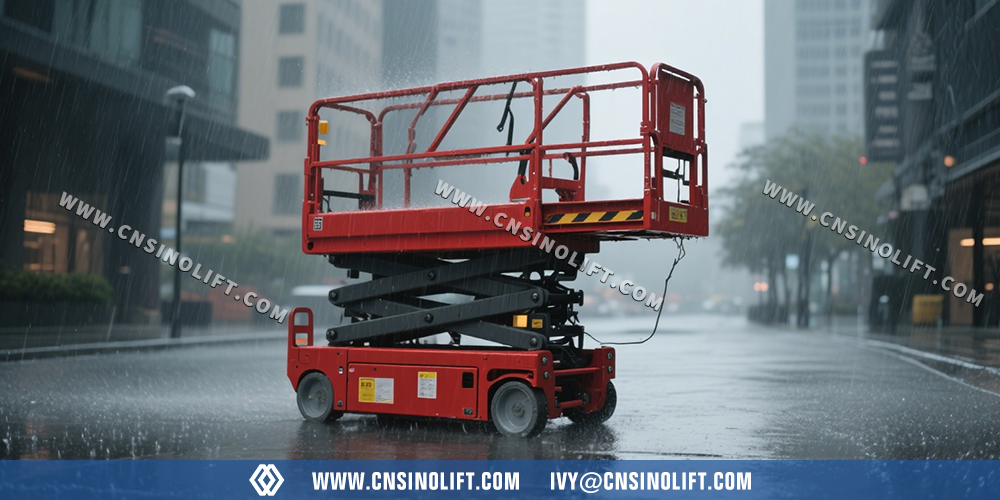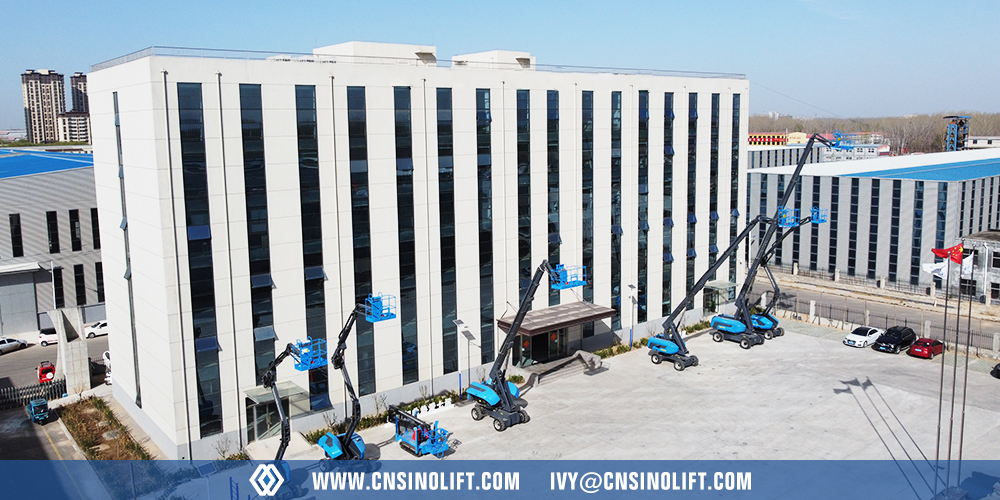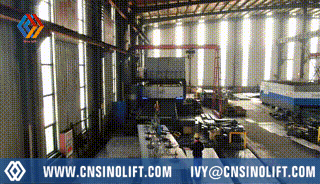Electric scissor lifts are a popular choice for elevated work in warehouses, factories, and construction sites. But one common question from customers is: Can electric scissor lifts get rained on? Or more specifically, can they be used in the rain?
In this article, we’ll give you a practical, professional answer based on real-world use, safety considerations, and equipment structure.

Yes, Self-Propelled electric scissor lifts can withstand light rain or brief exposure to wet conditions—but only when fully lowered and parked safely. The machine’s base structure is generally designed to be weather-resistant to some degree, especially those with high-quality surface treatments such as electrophoretic coating (电泳防锈处理).
At Henan Sino Lift Co., Ltd., our electric scissor lifts feature electrophoretic coating in addition to standard powder spraying. This process creates a more uniform, long-lasting anti-rust layer, offering superior protection against corrosion even in humid or slightly wet environments. This means:
The machine can be parked outdoors temporarily in light rain.
Surface components like the platform and guardrails are better protected from rust and moisture damage.
Extended service life when stored or used in varying environments.
However, it's crucial to distinguish between standing in the rain and working in the rain.

Generally, you should not operate an electric scissor lift in the rain, especially when raised. Here’s why:
When the platform is elevated, more electrical and control systems are exposed, increasing the chance of water infiltration. This could lead to:
Malfunctioning controls
Short circuits
Unexpected lift behavior
Rain is often accompanied by:
Wet surfaces → higher slip risks for operators
Wind → increased tipping or instability risk when elevated
Lightning → elevated platforms become more hazardous
Therefore, it’s recommended to avoid using the machine in the rain, even if it is technically weather-resistant.
| Condition | Allowed When Lowered | Allowed When Elevated | Recommended Action |
| Light rain (short-term) | ✅ Yes | ❌ No | Park safely and power off |
| Heavy rain / thunderstorm | ❌ No | ❌ No | Store indoors or cover completely |
| After rain (wet ground) | ✅ Yes | ⚠️ Caution | Check surroundings, dry surface first |
If your work environment includes unpredictable weather, consider the following steps:
Choose a lift with enhanced anti-corrosion features, like electrophoresis and sealed components.
Use a protective cover or tarp when not in use.
Park the lift in a sheltered area after use, especially during off-hours.
Regularly inspect connectors and exposed components for water damage or corrosion.
If your work frequently occurs outdoors and may involve light rain or moisture, you might consider:
These are designed for harsh outdoor conditions and usually have sealed components, more powerful motors, and weatherproof controls.
If the concern is ground pressure on delicate surfaces (e.g., tiles or polished concrete), aluminum mast lifts offer:
Lighter weight (as low as 200kg)
Compact design (as narrow as 0.8m)
Easier indoor maneuvering
These are better suited for indoor areas where rain exposure is unlikely, but ground sensitivity is a concern.
Electric scissor lifts can tolerate light rain when parked and lowered, especially if enhanced with anti-rust electrophoretic coating. However, they should not be used during rainfall, particularly when elevated, due to both safety and equipment protection concerns.
If your work requires consistent outdoor usage, consult with your supplier for weatherproof or rough-terrain models or discuss custom configurations that match your operating conditions.
Still unsure if your application fits electric scissor lifts in wet environments? Reach out to us—we’ll recommend the right model for your job.
Looking for a reliable self-propelled scissor lift at factory-direct prices?
HENAN SINO LIFT CO., LTD offers high-quality models with strong safety features and global shipping. Contact us to learn more!

